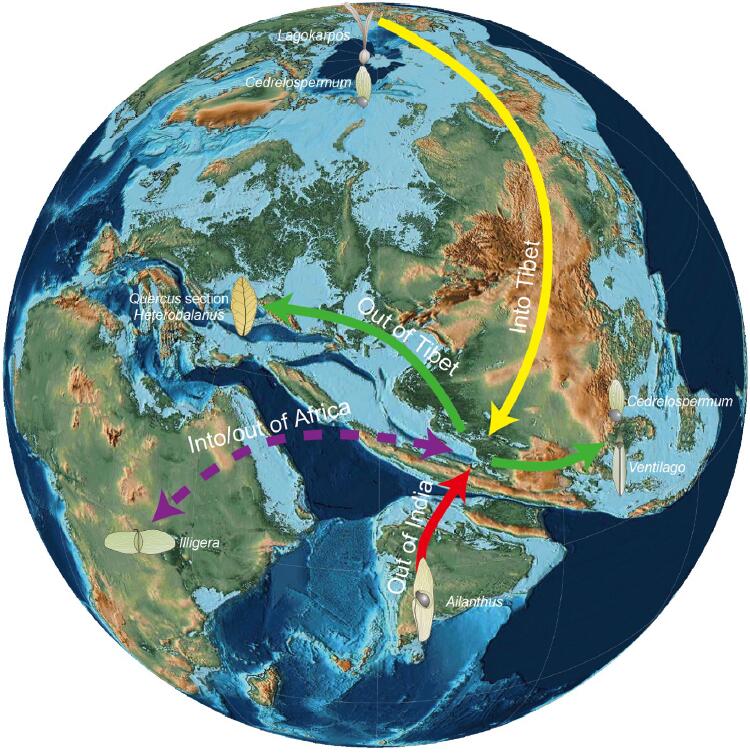Plant fossils play an important role in understanding landscape evolution across the Tibetan Region, as well as plant diversity across wider eastern Asia. In the past decade, important progress has been achieved in Cenozoic paleobotany throughout the Tibetan Region. In a study published in SCIENCE CHINA: Earth Sciences, researchers from Xishuangbanna Tropical Botanical Garden (XTBG) and Kunming Institute of Botany (KIB) summarizes the major progress in five ways.
Firstly, many of the earliest fossil records distributed worldwide, or in Asia, have been excavated from Tibet, indicating that Tibet was once a vital hub generating plant diversity.
Secondly, a number of fossil sites, with many important taxa, have now been precisely dated, providing well constrained and valuable information for biogeographic and taxonomic research. The evolution of these fossil taxa, combined with their geographic and topographic patterns throughout the Northern Hemisphere, indicate that the Tibetan Region was a “crossroad” for floral exchange during the Paleogene, with intensive exchanges taking place between North America, Europe, India, and other parts of Asia.
Thirdly, Cenozoic plant fossils from the Tibetan Region have played a critical role in reconstructing paleo-elevations and paleo-environments. The paleobotanical results evidence a low-elevation central valley in the Tibetan Plateau during the Paleogene.
Fourthly, plant diversity in central Tibet has undergone a transformation from taxa typical of tropical, to subtropical, to temperate to deciduous shrubs during the Cenozoic, and the evolution of plant diversity coincides with the evolution of topography and landscape.
Fifthly, many advanced methods and multidisciplinary approaches have been applied in exploring the Cenozoic paleobotany of the Tibetan Region, which have greatly enriched new ideas and methods in this research field.
Contact
ZHOU Zhekun Ph.D
Key Laboratory of Tropical Forest Ecology, Xishuangbanna Tropical Botanical Garden, Chinese Academy of Sciences, Mengla, Yunnan 666303, China
E-mail: zhouzk@xtbg.ac.cn

The Tibetan Region—A crossroad for floristic exchanges in the Paleogene.

